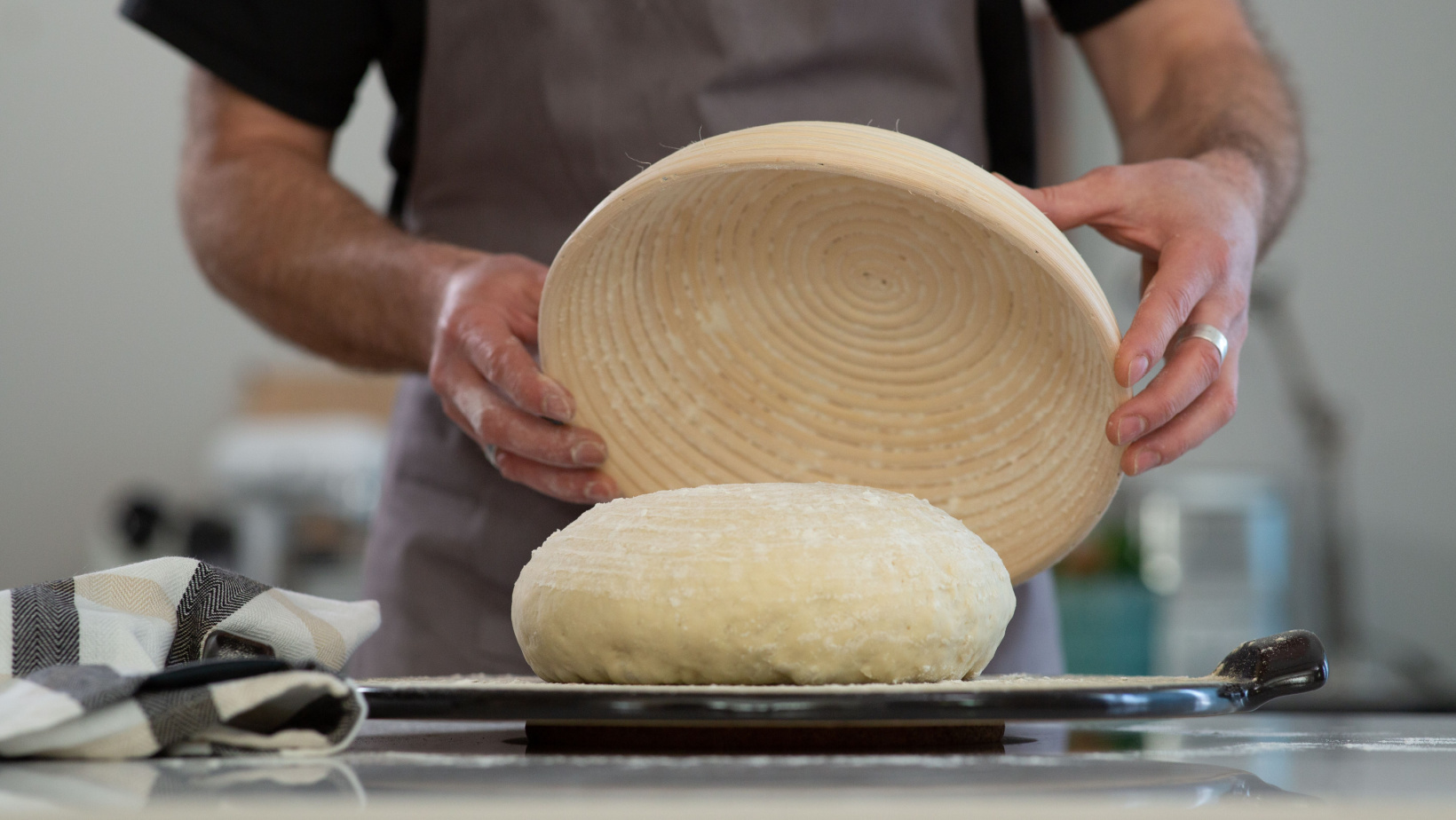A dough conditioner is an ingredient that improves the consistency of bread. Any additional ingredients besides flour, yeast and water can be considered a dough conditioner.
Different ingredients will have different outcomes on the bread.
Commonly will be called “flour treatment agents” or “improving agents”. These names refer to the fact that dough conditioner positively impacts the dough’s strength, development, or workability.
Benefits:
- Decreases the time dough needs to rise and proof, which saves time in the bread making process
- Provides consistency between batches of bread
- Increases the nutrients within the dough, which aides in yeast growth
- Strengths gluten structure
- Increased yeast growth and gluten structure, allow more gas to be produced by the yeast and retained by the gluten structure (better crumb)
- Longer shelf life
Types:
| Type | What it Does | Example |
| Reducing Agents | Breaks down the protein (gluten) and restructures the gluten. This minimizes the proofing time | Sodium bisulfite |
| Enzymes | Breaks down molecules; starches and (maltose = glucose + glucose) to feed the yeast and increase gas production | Amylase, diastatic malt |
| Oxidants | Strength dough through disulfide bonding, allows for greater gas retention | Ascorbic acid |
| Emulsifiers | The water and fat soluble nature of emulsifiers allows for a balanced dough which allows for a more uniform bread and crumb consistency ** Fix water retention |
Lecithin powder, SSL, sodium alginate |

| Ascorbic Acid – Also known as vitamin C, sourced from citrus fruits – Function (oxidant) – stabilizes gluten networks with dough. Creates a uniform crumb – In the presence of oxygen and ascorbic acid oxidase (an enzyme found in wheat flour), ascorbic acid goes from a reducing agent to an oxidizing agent – During the flour/water mixing process, the oxidation of thiol groups promotes the bonding of disulfide groups between proteins. This has a gluten strengthening effect – Higher gas retention – Greater elasticity – High dough tolerance to over proofing or mixing – Common Usage: 0.03% by flour weight |
| Diastatic Malt – A type of malt made from barley and wheat that contains the enzyme diastase (amylase). – Function (enzyme) – corrects enzyme activity and adjusts fermentation time – Provides natural sweetness – Gives a darker brown color to baked goods, as well as a distinctive flavor – Shelf life extended – traps free water, reduces microbial growth – Fermentation aid – provides food for yeast and strengths gluten network – Can compensate for reduced enzyme activity in low amylase flours – Common Usage: ½ – 1 tsp per 1 cup of flour |
| Lecithin (powder) – Sourced from egg yolks, soybeans, corn, and rapeseed – Function (emulsifier) – polar head is hydrophilic, while the two fatty acid chains are lipophilic – Allows it to stabilize oil in water and water in oil emulsions. – Finer crumb Gluten stability – Better emulsification of fat – Longer shelf life Increased water absorption – Common Usage: 0.2%-1% by flour weight |
| Sodium Stearoyl Lactylate – Function (emulsifier), dough strengthened and crumb softener – Ionic and nonpolar nature, it is able to interact with gluten proteins promoting their aggregation (forming gluten network) – Common Usage: 0.3%-0.5% by flour weight – Delays the onset of staling – Lipophilic end binds to interior of the amylose inner helix and the hydrophilic side to water, preventing retrogration |
| Sodium Alginate – Natural polysaccharide (emulsifiers) – Functions: – Stabilize dispersions – Increase viscosity, high viscous solutions – Form gels, heat stable at low and high temperatures – Improve their overall texture – Improves shelf life and moisture retention – Common Usage: 0.5%-1.5% by flour weight |
| Amylase – Function (enzyme) – A hydrolytic enzyme that breaks down starch into dextrins and sugars – Extend the shelf life of bread – Provide fermentable and reduced sugars – Accelerate yeast fermentation and boost gassing for optimum dough expansion during proofing and baking – Act as crumb softeners by inhibiting staling – Intensify flavors and crust color by enhancing – Maillard browning and caramelization reactions – Common usage: 0.002%-0.006% by flour weight |


